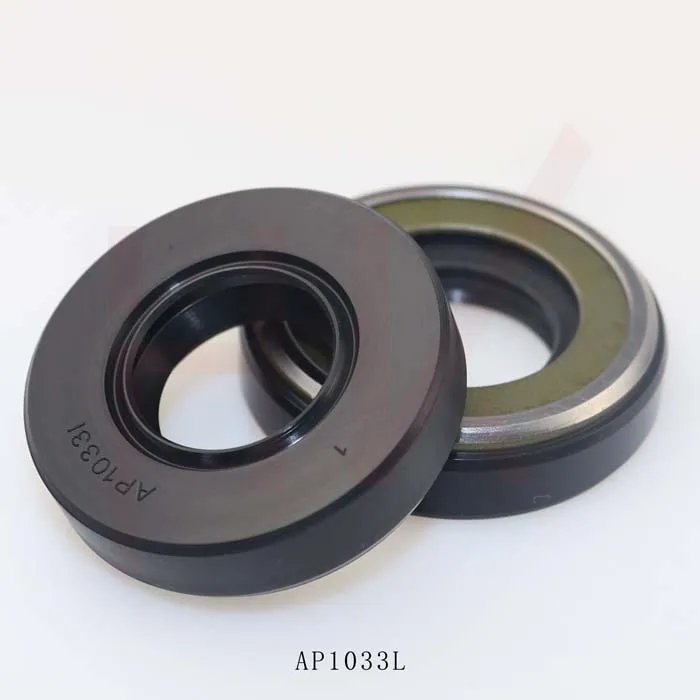Dàmh . 22, 2024 01:52 Back to list
Hydraulic Scraper Seal Technology for Enhanced Performance and Efficiency in Fluid Systems
Understanding the Hydraulic Scraper Seal An Essential Component of Modern Machinery
In the realm of engineering and industrial machinery, the hydraulic scraper seal plays a crucial role in the functionality and efficiency of various systems. This component, which is often overlooked, is integral to maintaining the integrity and performance of hydraulic systems used in construction, manufacturing, and numerous other applications. In this article, we will explore the significance of hydraulic scraper seals, their design, functionalities, and the materials used in their construction.
What is a Hydraulic Scraper Seal?
A hydraulic scraper seal acts as a barrier to prevent contaminants such as dirt, dust, and moisture from entering the hydraulic system while allowing for the effective operation of hydraulic fluid. These seals are typically found in hydraulic cylinders, where they serve to protect the internal components from external debris that could cause wear and tear, ultimately leading to system failure.
The design of a hydraulic scraper seal is critical to its effectiveness. They are usually made of durable materials that can withstand high pressure and harsh operating conditions. Their primary function is to scrape off contaminants from the rod or piston surfaces of hydraulic cylinders during operation, ensuring that only clean hydraulic fluid circulates within the system.
Importance of Hydraulic Scraper Seals
1. Contamination Control One of the main purposes of a hydraulic scraper seal is to control contamination. In a hydraulic system, even minor impurities can lead to significant issues, including reduced efficiency, increased wear on components, and potential system failures. The scraper seal plays a proactive role in preventing contaminants from entering the hydraulic fluid, thus extending the lifespan of the machinery.
2. Enhancing Performance By keeping the hydraulic system clean, scraper seals help maintain optimal pressure and functionality. Equipment that operates smoothly and efficiently is not only more productive but also consumes less energy, translating to cost savings and lower environmental impact.
3. Minimizing Maintenance Costs Regular maintenance of hydraulic systems can be labor-intensive and expensive. Hydraulic scraper seals minimize maintenance needs by providing a first line of defense against contamination. When these seals function correctly, they reduce the frequency of repairs and replacements needed for other components within the hydraulic system.
Design Requirements and Materials
scraper seal hydraulic

The design and materials of hydraulic scraper seals are tailored to meet specific operational demands. Common materials used in the production of scraper seals include polyurethane, rubber, and various thermoplastics. Each material is chosen based on its resistance to chemicals, wear, and temperature variations.
1. Polyurethane Known for its excellent abrasion resistance and flexibility, polyurethane is often used in environments where seals are subjected to mechanical stress and wear. This material can withstand a wide range of temperatures and pressures, making it ideal for demanding applications.
2. Rubber While rubber seals are generally more affordable, they may not offer the same level of durability as polyurethane. However, they are effective in less abrasive environments where high levels of flexibility and conformability are required to maintain a proper seal.
3. Thermoplastics Advanced thermoplastics provide excellent chemical resistance and can often outlast traditional rubber materials. These materials are engineered to withstand extreme environmental conditions, making them suitable for use in hydraulic systems that encounter aggressive fluids.
Application Across Industries
Hydraulic scraper seals are widely used across several industries, including construction, mining, agriculture, and manufacturing. In construction, they are critical in excavators and bulldozers, where hydraulic systems are constantly exposed to harsh conditions. In agriculture, hydraulic scraper seals are used in equipment such as tractors and harvesters, ensuring that machines operate smoothly and efficiently in the field.
Additionally, in the manufacturing sector, hydraulic machinery relies on these seals to maintain productivity and reduce downtime. With the increasing demand for high-performance machinery, the importance of hydraulic scraper seals cannot be overstated.
Conclusion
In summary, hydraulic scraper seals play an indispensable role in the longevity and performance of hydraulic systems across various industries. From preventing contamination to minimizing maintenance costs, their importance is felt in every operation that relies on hydraulic machinery. As technology advances and machinery becomes more complex, the need for effective and reliable hydraulic scraper seals will only continue to grow. Understanding their design, materials, and functions is essential for engineers and operators looking to optimize their hydraulic systems and ensure reliable long-term performance.
-
Understanding Oil Seals and Their Role in Machinery Efficiency
NewsApr.08,2025
-
The Importance of Seals in Agricultural and Hydraulic Systems
NewsApr.08,2025
-
Essential Guide to Seal Kits for Efficient Machinery Maintenance
NewsApr.08,2025
-
Choosing the Right TCV Oil Seal for Your Machinery
NewsApr.08,2025
-
Choosing the Right Hydraulic Oil Seals for Reliable Performance
NewsApr.08,2025
-
A Comprehensive Guide to Oil Seals and Their Applications
NewsApr.08,2025
-
The Importance of High-Quality Oil Seals in Industrial Applications
NewsMar.26,2025
Products categories
















